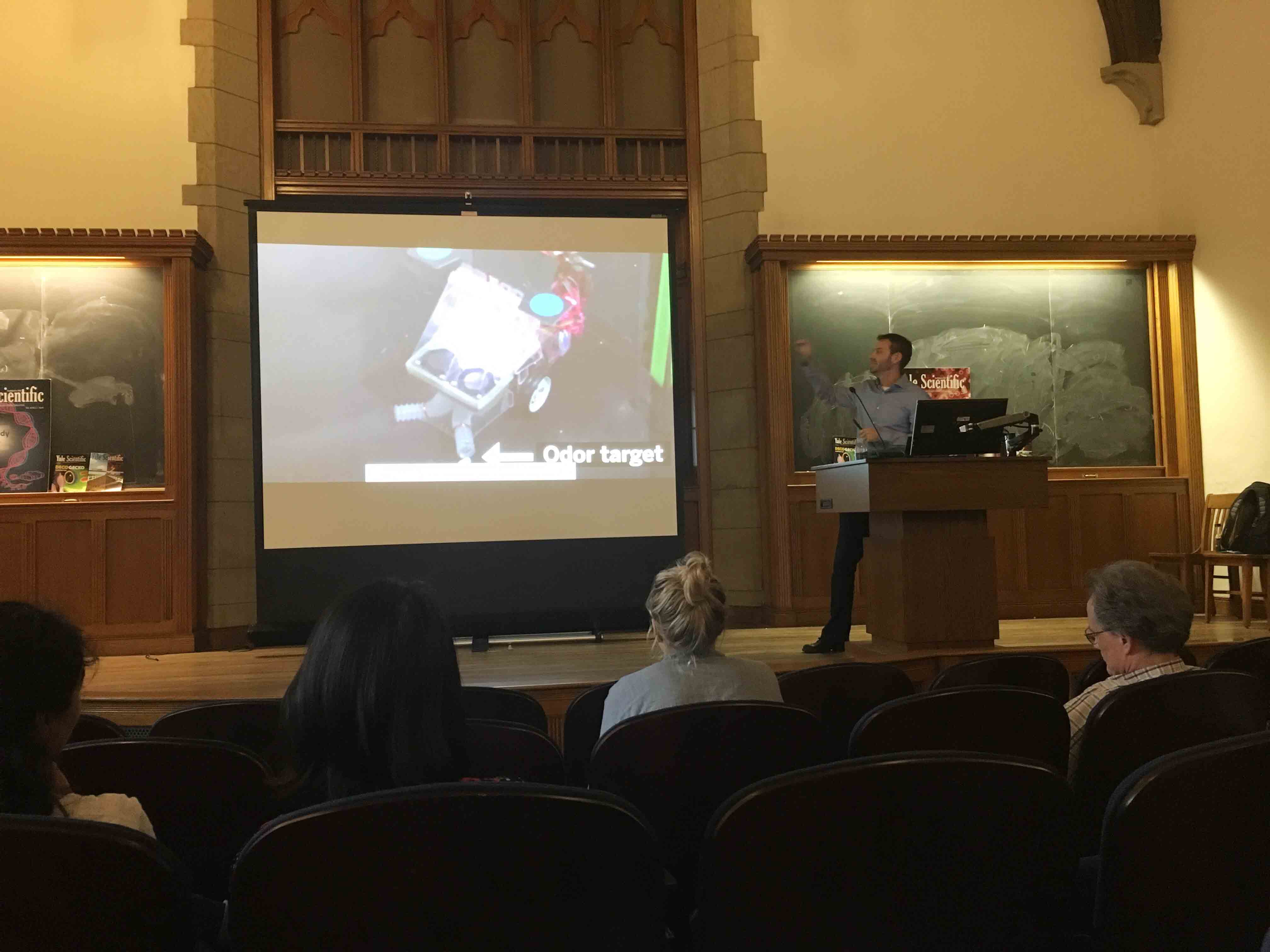
David Grimm GRD ’04, the online news editor of the prominent journal Science, gave a talk Wednesday afternoon about how scientists can communicate their research to a broader audience.
The talk addressed broad strategies for distilling scientific research into what Grimm called “user-friendly language,” and offered examples of flawed writing or phrases for the audience to workshop. Yale Scientific Magazine, the Poynter Fellowship for Journalism and Saybrook College jointly sponsored Grimm’s talk.
“I think the big takeaway [of the talk] is that there really is an important responsibility on scientists and people who care about science to clearly convey that information to others, whether you’re interested in becoming a science journalist yourself or you’re just speaking to a reporter,” said Chunyang Ding ’19, the editor in chief of Yale Scientific.
The talk was split into two main parts. After a brief introduction, Grimm shared tricks he had amassed over years of working as a science communicator.
Grimm emphasized the importance of analogies and accessible language, and cautioned against using jargon and vague adjectives.
Grimm said he usually gives this talk to scientists and his journalism students at Johns Hopkins University, and that the techniques he describes can be applied to a variety of situations a scientist may encounter, from an interview with a journalist to a presentation at a conference to a conversation with a family member or friend.
Kevin Chang ’20, the operations manager of Yale Scientific, said Grimm’s talk changed the way he will write about science.
“We’re kind of taught just from classes and courses that when you do science, you write in a very specific way, when all that does is impede communication with the general public,” he said.
Throughout the lecture and the tea, Grimm provided interactive examples of the principles he introduced. When faced with providing alternatives to the jargon “interspecies predation,” audience members came up with “hunting.” A way to add more description to the phrase “an irregularly shaped asteroid?”
“An asteroid the size of Texas and the shape of a potato,” a member of the audience at the tea said.
Christiane Olivero GRD ’22, a doctoral student in the Molecular, Cellular and Developmental Biology program, said she is considering a career in science communication and attended the talk to hear about Grimm’s transition from doing research to writing about it and editing it. She added that she thought the lecture was helpful in thinking about how to break down research in order to explain it to a range of audiences.
After the talk, Grimm and Ecology and Evolutionary Biology professor Thomas Near — also the head of Saybrook — participated in an informal Saybrook Tea followed by a dinner at the restaurant ZINC with around 12 students chosen by lottery.
In contrast to the attendance at the Poynter Fellowship’s last sponsored science-themed event — a panel discussion of scientists moderated by science writers — Grimm’s talk drew undergraduate students, graduate students and staff to Sudler Hall.
“For the talk, I was really surprised myself because I saw a lot of graduate students, a lot of people from the community — I didn’t expect the [Yale School of Medicine’s] Office of Communications people to be there,” Ding said.
While Ding said Yale Scientific has no plans to organize a similar event for the rest of the fall semester, he hinted that the magazine was in the early stages of planning an event for the spring semester.
The Yale Scientific Magazine was established in 1894.
Madeline Bender | madeline.bender@yale.edu







